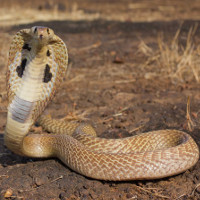To the Aborigines of Australia, the monster Bunyip in their legend represents both good and evil, the incarnation of both devil and angel. Is the Bunyip monster a creature that used to exist or is it just a product of imagination?
According to the Aborigines of Australia, Bunyip lives in lakes, rivers and nearly all of Australia’s water bodies, mainly in Victoria and New South Wales. People who visit Tasmania also talk about this canine-like creature. Most of Bunyip’s reports are from the 19th century.

According to legend, Bunyip can hunt both women and children.
Bunyip’s appearance is unclear, as there are reports of aquatic creatures resembling a dog or a seal. Many also describe a creature with a long neck and a small head. Bunyip resembles a seal or dog up to 1.2-1.8m long, it is covered with long brown or black fur. On the other hand, the 1.5-40m long necks usually have dark fur.
Bunyip’s head resembles that of a bull dog. There are many large fangs in the jaw and the ears are very prominent. They have no tail, but long antennae and fins. The Bunyip with its long neck has small fangs, and its ears and head look more like a horse or emu than a dog. The neck is about 1m long, slender and mane. There are also skin folds around the neck and tail resembling a horse.

Bunyip’s appearance is quite similar to that of mammals.
Aboriginal people describe Bunyip as a nocturnal amphibian. Their homes are lakes, rivers, streams and ponds. They have excellent swimming skills, being able to move through the water very quickly thanks to their fins or feet. Bunyip also likes to make a lot of loud roar-like sounds.
According to many legends, Bunyips are dangerous creatures for humans who love to eat women and children. Usually, however, they eat crabs and eggs lying in burrows.

Bunyip is the devil or angel in the minds of Aboriginal Australians.
Now, some researchers believe that Aboriginal stories about the creature may have a basis in fact and describe a species that went extinct about 50,000 years ago.

